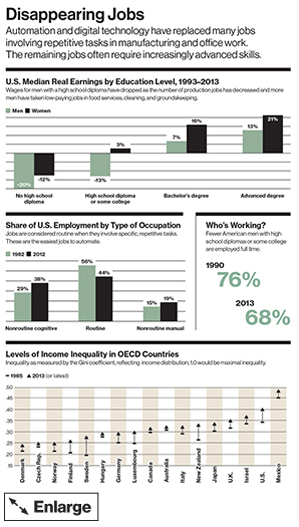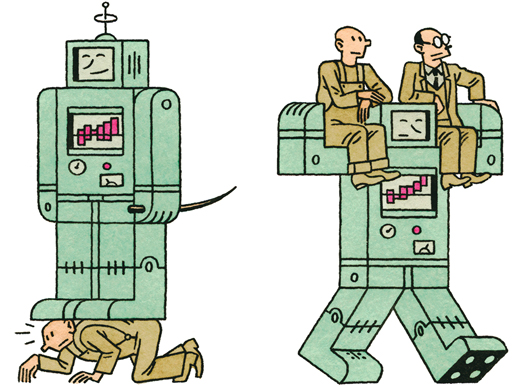At the P2P Foundation, we see the institutional emergence of a commons economy through the following three social forms:
- at the heart of value creations are productive communities of contributors, paid or unpaid, that create shared resources i.e. commons
- around these shared resources, new forms of entrepreneurial coalitions form, that created added value for the market to create livelihoods for the commoners, which can take the form of Open Cooperatives, Platform Cooperatives
This wiki section focuses mostly on the new entrepreneurial coalitions and the productive communities (sometimes called neo-tribes) with whom they are connected.
Key concepts related to this are
Phyles and
Neo-Venetianist Networks, concepts developed by
Las Indias. A fictional treatment can be found in the
Diamond Age, a science fiction book by Neal Stephenson. The 'poor man's' equivalent may be found in the description of transmigrant networks in: "Etrangers de passage. Poor to poor, peer to peer d’Alain Tarrius Editions de l’Aube.
Among our favourites for the moment are:
Associated organisations in this space are:
Documentation on post-corporate practices
What the world and humanity, and all those beings that are affected by our activities require is a mode of production, and relations of production, that are “free, fair and sustainable” at the same time. Post-corporate entities and the productive communities they are based on are pioneering new 'generative' practices, that co-create value with the commons, rather than 'extractive' practices that enclose the commons or capture value from the commons.
Closed business models are based on artificial scarcity. Though knowledge is a non- or anti-rival good that gains in use value the more it is shared, and though it can be shared easily and at very low marginal cost when it is in digital form, many extractive firms still use artificial scarcity to extract rents from the creation or use of digitized knowledge. Through legal repression or technological sabotage, naturally shareable goods are made artificially scarce, so that extra profits can be generated. This is particularly galling in the context of life-saving or planet-regenerating technological knowledge. The first commandment is therefore the ethical commandment of sharing what can be shared, and only creating market value from resources that are scarce and create added value on top or along these commons. Open business models are market strategies that are based on the recognition of natural abundance and the refusal to generate income and profits by making them artificially scarce.
Wiki section at
http://p2pfoundation.net/Category:Business_Models
Many new more ethical and generative forms are being created, that have a higher level of harmony with the contributory commons. The key here is to choose post-corporate forms that are able to generate livelihoods for the contributing commoners.
Open cooperatives in particular would be cooperatives that share the following characteristics:
1) they are mission-oriented and have a social goal that is related to the creation of shared resources
2) they are multi-stakeholder governed, and include all those that are affected by or contributing to the particular activity
3) they constitutionally, in their own rules, commit to co-create commons with the productive communities
I often add the fourth condition that they should be global in organisational scope in order to create counter-power to extractive multinational corporations.
Cooperatives are one of the potential forms that commons-friendly market entities could take. We see the emergence of more open forms such as neo-tribes (think of the workings of the Ouishare community), or more tightly organized neo-builds, such as Enspiral.org, Las Indias or the Ethos Foundation. Yet more open is the network form chose by the Sensorica open scientific hardware community, which wants to more tightly couple contributions with generated income, by allowing all micro-tasked contributions in the reward system, through open value or contributory accounting (more below).
Wiki section at
http://p2pfoundation.net/Category:Open_Company_Formats
Peer production is based on distributed tasks, freely contributed by a open community-driven collaborative infrastructure. The tradition of salaries based on fixed job description may not be the most appropriate way to reward those that contribute to such processes. Hence the emergence of open value accounting or contributory accounting. As practiced already by Sensorica, this means that any contributor may add contributions, log them according to project number, and after peer evaluation is assigned 'karma points'. When income is generated, it flows into these weighted contributions, so that every contributor is fairly rewarded. Contributory accounting, or other similar solutions, are important to avoid that only a few contributors more closely related to the market, capture the value that has been co-created by a much larger community. Open book accounting insure that the (re)distribution of value is transparent for all contributors.
Wiki section at
http://p2pfoundation.net/Category:P2P_Accounting
The copyleft licenses allow anyone to re-use the necessary knowledge commons on the condition that changes and improvements are added to that same commons. This is a great advance, but should not be abstracted from the need for fairness. When moving to physical production which involves finding resources for buildings, raw materials and payments to contributors, the unfettered commercial exploitation of such commons favours extractive models. Thus the need to maintain the knowledge sharing, but to ask reciprocity for the commercial exploitation of the commons, so that there is a level playing field for the ethical economic entities that do internalize social and environmental costs. This is achieved through copyfair licenses which, while allowing full sharing of the knowledge, ask for reciprocity in exchange for the right of commercialization.
Wiki section at
http://p2pfoundation.net/Category:Licensing
5. Commonfare solidarity practices
As one of the strong results of financial and neo-liberal globalization, the power of nation-states has gradually weakened, and there is now a strong and integrated effort to unwind the solidarity mechanisms that were embedded in the welfare state models. As long as we do not have the power to reverse this slide, it is imperative that we reconstruct solidarity mechanisms of distributed scope, a practice which we could call 'commonfare'. Examples such as the Broodfonds (NL), Friendsurance (Germany) and the health sharing ministries (U.S.), or cooperative entities such Coopaname in France, show us the new forms of distributed solidarity that can be developed to deal with the risks of life and work.
Wiki section at
http://p2pfoundation.net/Category:P2P_Solidarity
Open productive communities insure maximum participation through modularity and granularity. Because they operate in a context of shared and abundant resources, the practice of planned obsolescence, which is not a bug but a feature for profit-maximizing corporations, is alien to them. Ethical entrepreneurial entities will therefore use these open and sustainable designs and produce sustainable good and services.
Wiki section at
http://p2pfoundation.net/Category:Design
What decision-making is for planning, and pricing is for the market, mutual coordination is for the commons!
We will never achieve a sustainable 'circular economy', in which the output of one production process is used as an input for another, with closed value chains and where every cooperation has to be painfully negotiated in the conditions of lack of transparency. But entrepreneurial coalitions who are already co-dependent on a collaborative commons can create eco-systems of collaboration through open supply chains, in which the production processes become transparent, and through which every participant can adapt his behaviour based on the knowledge available in the network. There is no need for over-production when the production realities of the network become common knowledge.
Wiki section at
http://p2pfoundation.net/Category:Mutual_Coordination
8. Cosmo-Localization: what is light is global, what is heavy is local
“What is light is global, and what is heavy is local”: this is the new principle animating commons-based peer production in which knowledge is globally shared, but production can take place on demand and based on real needs, through a network of distributed coworking and microfactories. Certain studies have shown that up to two-thirds of matter and energy does not go to production, but to transport, which is clearly unsustainable. A return to relocalized production is a since qua non for the transition towards sustainable production.
Wiki section via
http://p2pfoundation.net/Category:Sustainable_Manufacturing
9. Mutualization of physical infrastructures
Platform cooperatives, data cooperatives and fairshares forms of distributed ownership can be used to co-own our infrastructures of production.
The misnamed 'sharing economy' from AirBnB and Uber nevertheless shows the potential of matching idle resources. Co-working, skillsharing, ridesharing are examples of the many ways in which we can re-use and share resources to dramatically augment the thermo-dynamic efficiencies of our consumption.
In the right context of co-ownership and co-governance, a real sharing economy can achieve dramatic advances in reduced resource use. Our means of production, inclusive machines, can be mutualized and self-owned by all those that create value.
Wiki section at
http://p2pfoundation.net/Category:Sharing
10. Mutualization of generative capital
Generative forms of capital cannot rely on a extractive money supply that is based on compound interest that is due to extractive banks. We have to abolish the 38% financial tax that is owed on all goods and services and transform our monetary system, and substantively augment the use of mutual credit systems.
Wiki section at
http://p2pfoundation.net/Category:Peerfunding
Key Resources
Key Players
In France
CEDRIC :
Collaborative Ecosystem Development and Roadmap Innovating for the Commons
Participants:
- Association Ekopratik
- Association Open Atlas
- Chez Nous [1]
- Dialoguea [2]
- Living Coop
- Multi Bao [3]
- Nacelle 0.2 [4]
- Organisation Pixel humain [5] video
- P2P Foundation France with Julien Cantoni
- Projet Communecter [6] video
- Unissons
Pages in category "Post-Corporate"
The following 15 pages are in this category, out of 15 total.







 FILLING THE GAP DEBT-FREE
FILLING THE GAP DEBT-FREE


